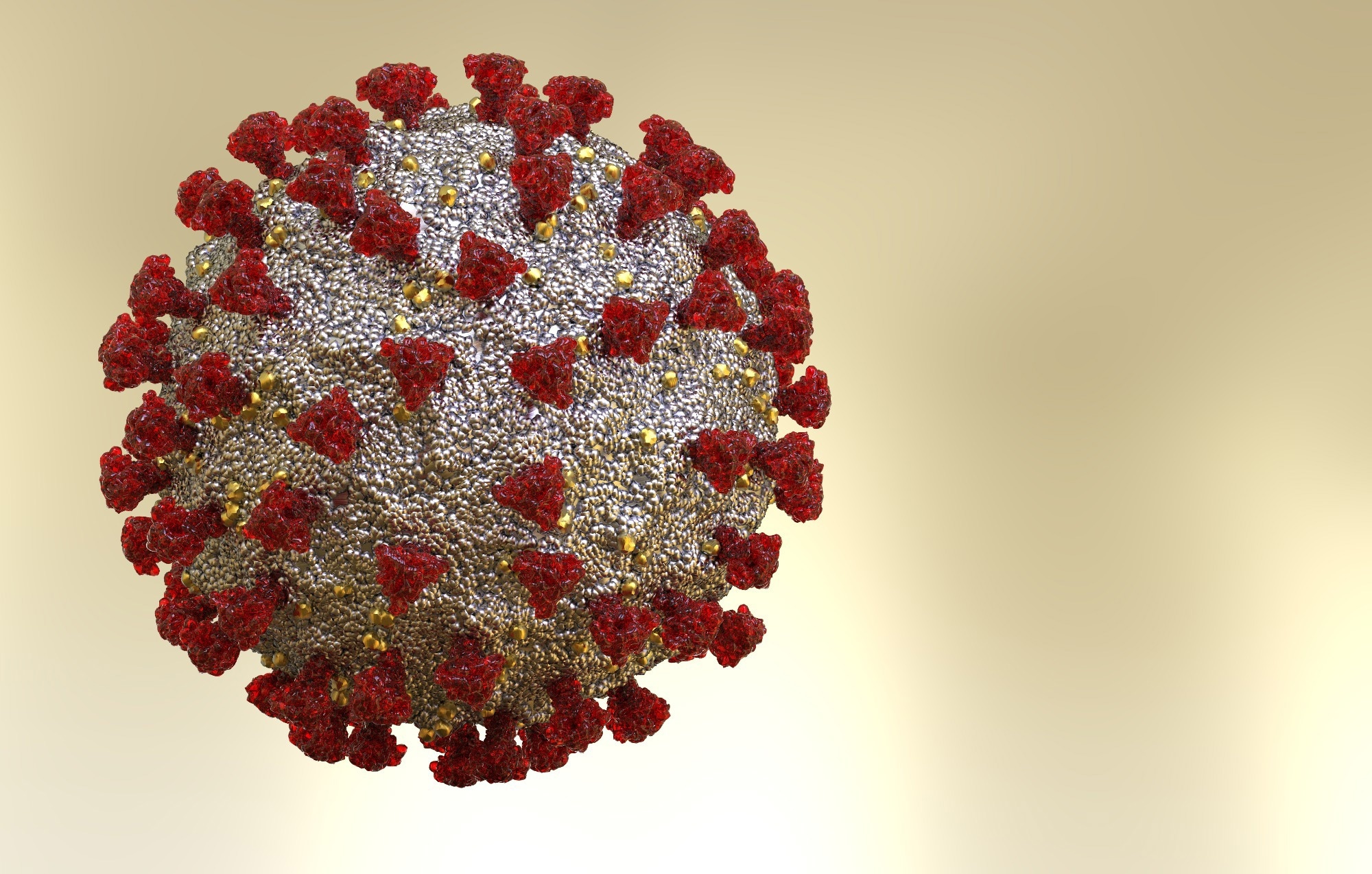In a recent study posted to the bioRxiv* preprint server, researchers at the Scripps Research Institute examine stabilized, recombinantly expressed, soluble spike-protein trimers from the seven most prominent severe respiratory syndrome coronavirus 2 (SARS-CoV-2) variants to compare the N (asparagine)-glycan landscape and understand the interactions between the virus and host cell.
 Study: Evolving spike-protein N-glycosylation in SARS-CoV-2 variants. Image Credit: Limbitech / Shutterstock.com
Study: Evolving spike-protein N-glycosylation in SARS-CoV-2 variants. Image Credit: Limbitech / Shutterstock.com

 *Important notice: bioRxiv publishes preliminary scientific reports that are not peer-reviewed and, therefore, should not be regarded as conclusive, guide clinical practice/health-related behavior, or treated as established information.
*Important notice: bioRxiv publishes preliminary scientific reports that are not peer-reviewed and, therefore, should not be regarded as conclusive, guide clinical practice/health-related behavior, or treated as established information.
Background
The coronavirus disease 2019 (COVID-19), which originated in late 2019 in Wuhan, China, has claimed over 6.9 million lives worldwide. SARS-CoV-2 has rapidly evolved since the onset of the pandemic and acquired various novel mutations that have increased its transmissibility among humans. The ancestral SARS-CoV-2 strain Wuhan-Hu-1 was dominant during 2020 and then evolved to produce five major variants of concern (VOCs), including the Alpha, Beta, Gamma, Delta, and Omicron variants.
The trimeric SARS-CoV-2 spike protein binds to the angiotensin-converting enzyme 2 (ACE-2) receptor to mediate viral entry into the host cell. During the passage of the virus through the lumen of the endoplasmic reticulum, the spike protein is glycosylated. As the SARS-CoV-2 spike protein progresses through the Golgi complex, the high mannose N-glycans on the glycosylated spike protein are converted to complex N-glycans.
Spike-protein N-glycans are associated with the interaction between the receptor binding domain (RBD) and ACE-2 receptor on the host cell. Thus, the significant role of these molecules in the host immune response emphasizes the importance of understanding the changes in the N-glycan landscape across different SARS-CoV-2 variants.
About the study
In the present study, researchers evaluate the N-glycan landscape of the Wuhan-Hu-1 SARS-CoV-2 spike protein, as well as the SARS-CoV-2 variants Alpha, Beta, Mu, Gamma, Delta, Lambda, and Omicron spike proteins. The N-glycan landscape was also compared with that of a recombinant spike protein that has been recently authorized by the United States Food and Drug Administration (FDA) for emergency use as a vaccine.
While the SARS-CoV-2 spike-protein recombinantly expressed in human cell cultures retained the C-terminal tags that allowed for trimerization, they lacked the transmembrane and C-terminal domains.
Negative-stain electron microscopy and size-exclusion chromatography were used to validate the purity and structural integrity of the pre-fusion spikes. Furthermore, the site-specific heterogeneity of the N-glycans was analyzed using sequential deglycosylation and a proteomics approach based on bottom-up mass spectrometry.
Results
The N-glycan processing sites in the spike protein were conserved across most of the SARS-CoV-2 variants. The head of the spike protein comprised over 1,100 amino acids and contained eight N-glycosylation sites in the N-terminal domain, two N-glycosylation sites in the RBD, and additional nine N-glycosylation sites. Comparatively, the stalk of the spike protein, with each protomer comprising less than 150 amino acids, contained three N-glycosylation sites.
Many of the N-glycosylation sites in the RBD, N-terminal domain, and stalk of the spike protein were completely occupied by complex glycans, while N234, which is present in the N-terminal domain, had high mannose glycans. Only those N-glycosylation sites that were involved in the dynamics of the RBD, in spike-protein stabilization due to proximity to the S1 or S2 subunits, or in the stabilization of the S2 post-fusion functions showed glycosylation changes.
Furthermore, hierarchical clustering analysis showed that despite the numerous novel mutations in the Omicron variant, its glycosylation patterns were more similar to the ancestral Wuhan-Hu-1 strain than to any of the other variants. Additionally, Delta and Gamma variants had the most different glycosylation patterns.
The difference between the results of the hierarchical clustering and evolutionary patterns deciphered from analyzing the nucleic acid mutations also suggested that glycan changes were under a selection pressure that was more dependent on a higher-order structure than the primary protein sequence.
Sites N616, N343, and N165 showed consistent shifts to high mannose glycans from complex glycans. While N343 and N165 are involved in the opening of the RBD, N616 is very close to D614G, which is the mutation consistently found in most SARS-CoV-2 variants. N616 is also involved in inducing structural changes to improve the integrity of the S1-S2 unit following Furin cleavage.
The SARS-CoV-2 Delta variant was associated with significantly less glycan processing in the sites N616, N343, and N165, which is believed to have improved syncytia formation and tumorgenicity on respiratory tract cells through mannose-binding receptors.
Respiratory tract cells expressed very low levels of ACE-2 receptors but were the most affected by the Delta variant. Thus, the mannose-binding receptors and low glycan processing in the three sites for the high pathogenicity of the Delta variant, however, need to be further examined.
Conclusions
The study findings suggest that most of the N-glycosylation sites are conserved across major SARS-CoV-2 variants. However, three N-glycosylation sites, including N616, N343, and N165, show reduced processing of high-mannose N-glycans to complex N-glycans.
These sites are involved in the opening of the RBD and integrity of the S1-S2 subunit post-Furin cleavage. The decrease in glycan processing in these sites could play a role in the spike function and pathogenicity of variants.
usechatgpt init success

 *Important notice: bioRxiv publishes preliminary scientific reports that are not peer-reviewed and, therefore, should not be regarded as conclusive, guide clinical practice/health-related behavior, or treated as established information.
*Important notice: bioRxiv publishes preliminary scientific reports that are not peer-reviewed and, therefore, should not be regarded as conclusive, guide clinical practice/health-related behavior, or treated as established information.